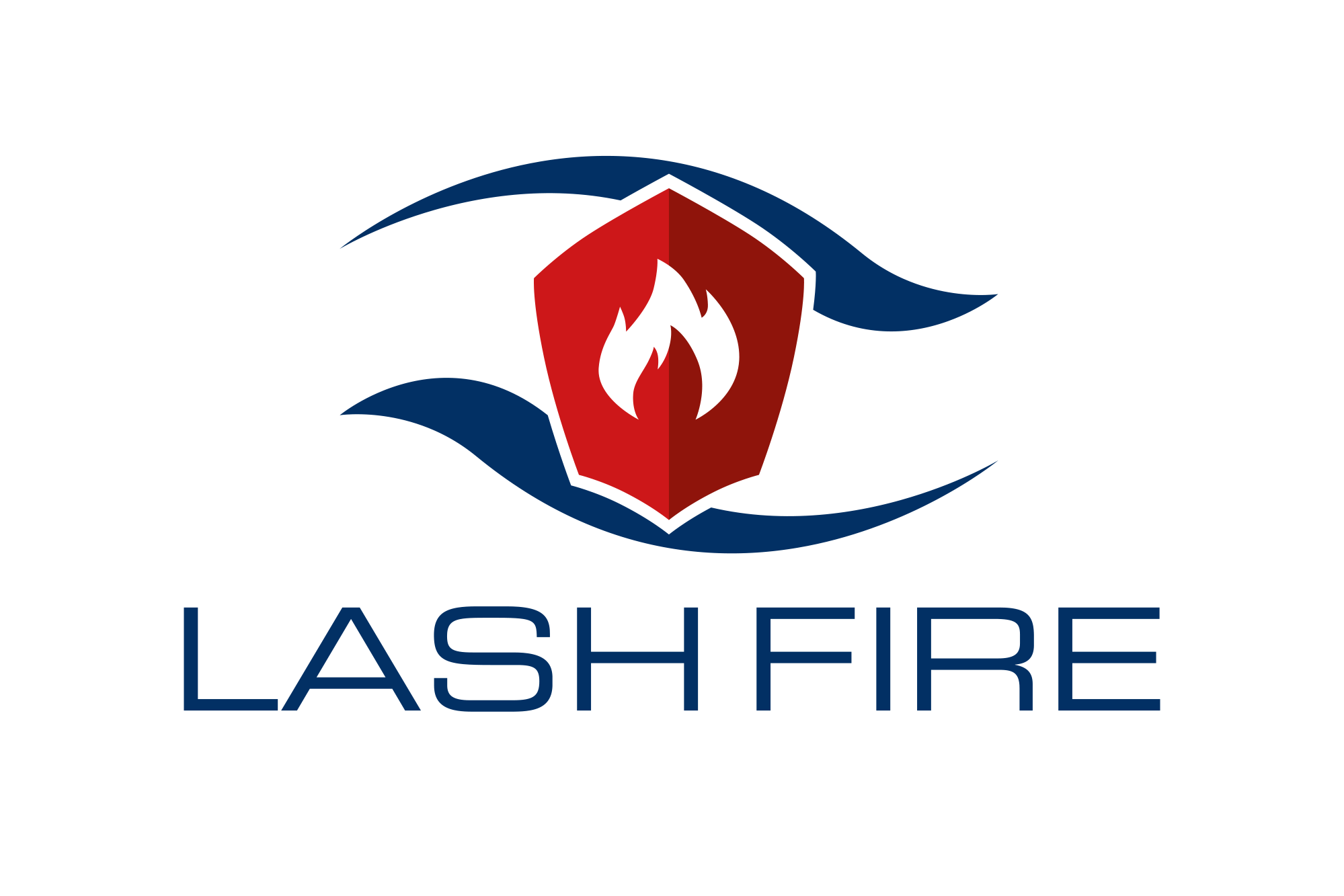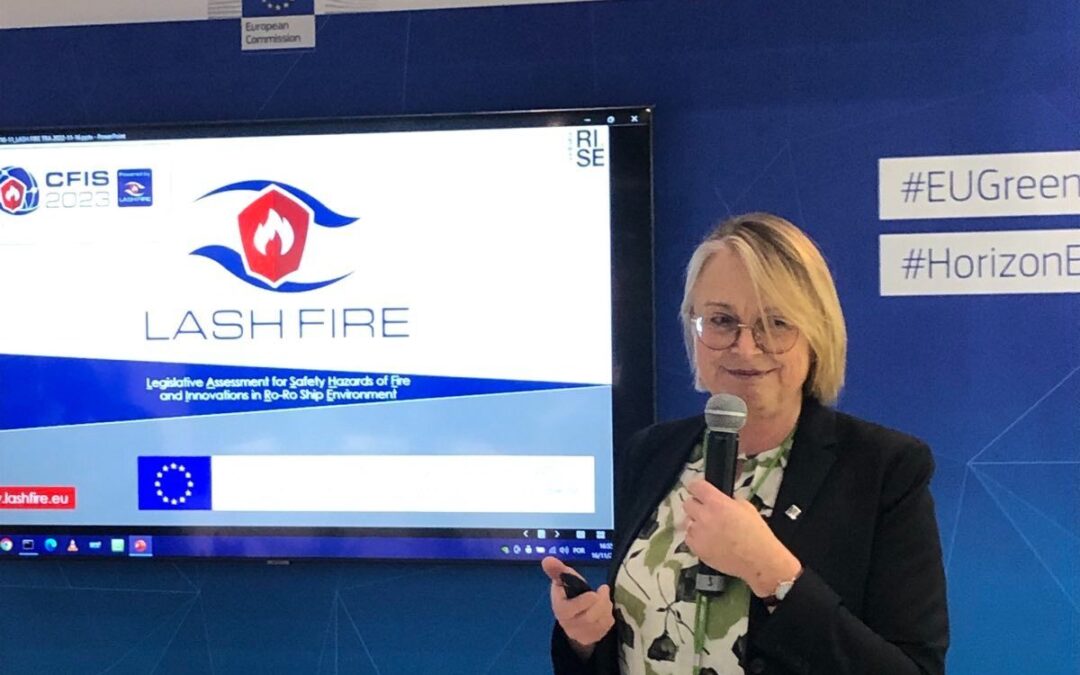Meet the partners is a series of interviews with the LASH FIRE partners who present core of the project. We ask the partners about their expertise, expectations from the project and anything we want to know about fire safety. For the seventh edition of Meet the Partners, we interview Maria Hjohlman, Senior Project Manager at RISE and Project Manager of LASH FIRE project.
1. What is your role in RISE and in LASH FIRE?
I am a senior project manager at RISE, in the department of Fire and Safety. As a project manager I am leading a wide variety of projects in the area of fires safety. The projects often involve large scale fire testing to evaluate efficiency of fire protection systems or to observe and measure fire behavior in specific scenarios. The projects are both research projects and client projects for the industry, or to give input to a fire investigation.
In LASH FIRE I have the role as the Project Manager. RISE is the Coordinator of the project where the project management is handled by the Project Management Group, consisting of Franz Evegren (Coordinator), Erika Hjelm (Financial Controller) and myself (Project Manager). As the Project Manager I organize the meetings in the decision making bodies General Assembly and the Steering Group. An important part of the role is to manage the contractual and financial matters, I am the contact point between the consortium and the EC Services. I am also leading the Quality Assurance Team and are monitoring the project internal review process to assure our deliverables are of high technical quality and of relevance for the project.
2. What was your experience with maritime fire safety projects before LASH FIRE?
I have 19 years of experience in working in the field of fire safety, first at Underwriters Laboratories in USA and the last 16 years at RISE in Sweden. The work has involved large scale fire testing and numerical simulation of fire dynamics and the effect of fires and smoke spread in enclosures. Many projects are related to maritime fire safety, others are related to fields such as buildings, underground constructions, trains and other types of vehicles. During eight of these years I hold the position as Manager of the Large Scale Fire Test Hall at Borås, Sweden, were several of the large scale fire tests in LASH FIRE were conducted.
3. What is in your opinion the most interesting part of work done in LASH FIRE and why?
I would say the cooperation and the high commitment by all members in the consortium. The project is unique in that we start with a wide range of identified fire safety challenges and develop well-evaluated concrete solutions that are feasible and could be implemented on a ship already today or in the near future, and we continue as far as to propose regulatory changes. This requires involvement and engagement by experts from a large field of fire safety, such as researchers, risk engineers, manufacturers of fire safety systems and ro-ro ship operators. For the solutions to be accurately evaluated regarding risk reduction potential, feasibility and cost, the consortium has worked close together in every step. The ambition by all partners has been high – to produce results likely to have high impact on ro-ro fire safety today and for the future.
The project is unique in that we start with a wide range of identified fire safety challenges and develop well-evaluated concrete solutions that are feasible and could be implemented on a ship already today or in the near future, and we continue as far as to propose regulatory changes.
4. LASH FIRE comes to an end this year in August, what are the main outcomes of the project and what will the future bring?
The main outcome will be a long list of recommended solutions to prevent and limit the effect of fires originating in ro-ro spaces, ready to apply by the maritime industry, ship builder, ship operators and authorities. The solutions have been validated and demonstrated on-board (a few in lab or by computer simulations, of practical reasons) and are well documented.
An important outcome is the recommended regulation changes addressed to IMO. The solutions included in this list have shown to be cost-effective, evaluated following the IMO recognized methodology, Formal Safety Assessment (FSA).
5. How do you think the maritime accident response can change until 2050?
I think there is a great potential in integrating digital systems and for modern technology such as drones, for surveillance, detection and fire control. I think we will see more of that in the future. Overall, I think we will see a broader integration of new technologies in the maritime sector. An area that needs further improvements is fire prevention, and this involves cargo and vehicles that are being transported, for example, it is unreasonable that reefer units still account for such a large percentage of fires in ro-ro spaces of ships.
6. What are other maritime safety projects RISE will focus on after LASH FIRE end?
RISE’s portfolio of maritime research projects is very wide and there is no specific large project replacing LASH FIRE, but rather a number of projects. These focus on the fire safety and risk management issues being the most relevant for the maritime industry, which at the moment revolve much around new types of fuels.


